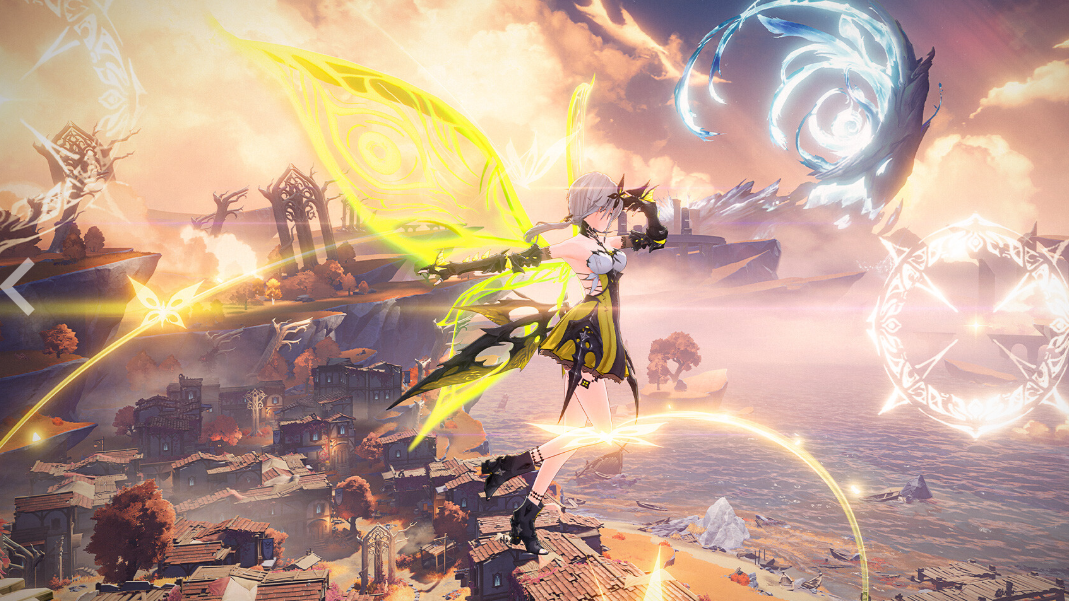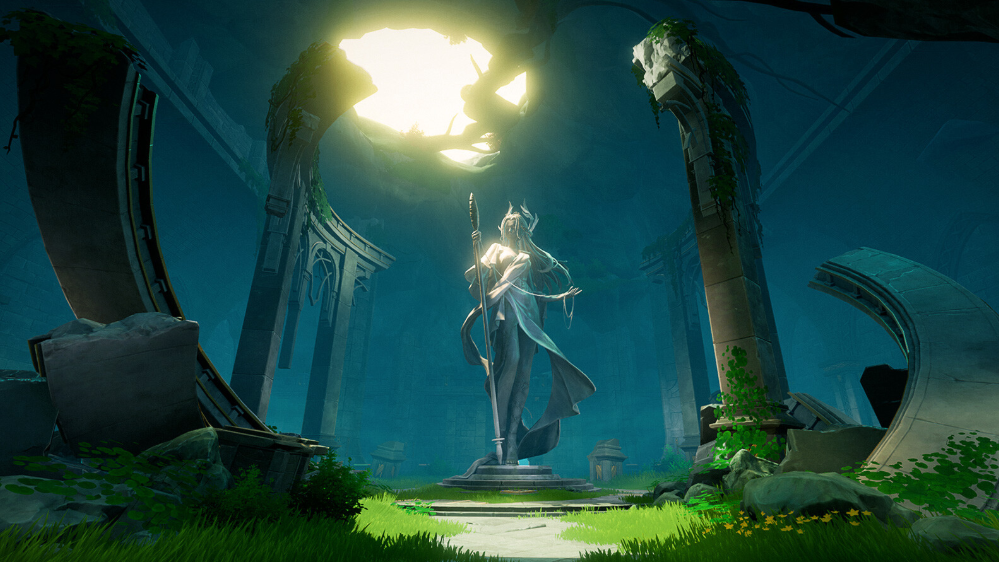Duet Night Abyss positions itself as a fast, flexible action RPG with a dual-protagonist story and a loadout system that swaps seamlessly between melee and ranged weapons. It’s developed by Pan Studio and published by Hero Games with free-to-play distribution and online co‑op. The PC release date is still TBA; you can wishlist the game on its official Steam listing at store.steampowered.com/app/3950020.
Core loop and progression (fragments, forging, loadouts)
Progression centers on two pillars:
- Unlocking: you farm character fragments and forging materials to add characters and weapons to your roster without being forced down a single template.
- Loadouts: each character supports multiple weapon classes, and you can swap between melee and ranged in combat to build layered combos around your preferred tools.
The game frames itself around a dual narrative (“two shores”) and a world of magic-meets-machinery that feeds both exploration and repeatable combat scenarios.

Combat: swap-friendly, aerial options, and mission variety
Combat is designed for pace and coverage. You can open at range, close with blades, juggle enemies with aerial attacks, then finish with ground takedowns—without being locked into a single weapon class. Mission structure mixes wave clearing with targeted objectives like tracking, recon, or rescue, which favors kits that can pivot quickly between crowd control and single-target pressure.
Roles, elements, and proficiencies (how teams are framed)
Characters slot into straightforward roles and attributes that make teambuilding predictable:
| Category | What it includes |
|---|---|
| Roles | DPS, Support |
| Elements | Pyro, Anemo, Hydro, Lumino, Electro, Umbro |
| Common proficiencies | Sword, Greatsword, Katana, Polearm, Whipsword, Dual Blades, Pistol, Dual Pistols, Assault Rifle, Shotgun, Bow, Grenade Launcher |
| Support staples | Control, heals, shields/DEF, sanity sustain, weapon/skill damage buffs |
| DPS staples | Weapon damage scalers, skill damage, summons, consonance/element synergies |
In day‑to‑day “farming” content, area damage and weapon‑damage scalers tend to move faster. In bossing, sanity economy and control-heavy supports matter more, with melee or ranged pressure depending on encounter design.
Monetization signals and what to expect
The store listing flags both “In‑App Purchases” and “Chance based in‑game purchases,” while the in‑game pitch emphasizes fragment‑based unlocking for characters and weapons. Read that as a hybrid model: core progression is grindable, but the game will still surface optional paid items and some chance‑based purchases. Until the storefront opens, treat specifics (what’s paid, what’s random) as subject to change.
On the cosmetic side, character and weapon dyes—and mix‑and‑match accessories—are positioned as a first‑class system, which is a natural place for paid styling without touching core power.
Co‑op, platforms, and languages
Feature flags include single‑player, online co‑op, and cross‑platform multiplayer. Interface and full audio are available in English, Japanese, Simplified Chinese, Traditional Chinese, and Korean. The Steam page lists the release as “to be announced,” and co‑op is enabled through standard online sessions.
PC performance targets (official requirements)
| Spec | Minimum | Recommended |
|---|---|---|
| OS | Windows 7 64‑bit | Windows 10 64‑bit |
| CPU | Intel Core i5 (9th) / AMD Ryzen 5 2600X | Intel Core i7 (10th) / AMD Ryzen 7 3700X |
| RAM | 16 GB | 32 GB |
| GPU | NVIDIA GTX 1060 / AMD RX 580 | NVIDIA RTX 2060 / AMD RX 5700 XT |
| Storage | 32 GB available | 40 GB available |
| Network | Broadband | Broadband |
Early build patterns (what actually performs)
In routine commissions, characters built around weapon damage or quick‑cycling skill damage clear the fastest—especially when paired with ranged options that tag multiple targets before you close the gap. Bossing rewards sanity‑neutral DPS and supports that blend control with either heals or weapon‑damage buffs. Kits that require taking hits to ramp damage look better on paper than they feel when most enemies die to the current top AoE options before the ramp matters.
If you prefer a simple path: level a flexible AoE DPS for farming and keep a control‑leaning support in your core group for boss mechanics and sanity management. The broader roster can then fill gaps for element checks or encounter‑specific mechanics.
Guides and the shifting “gacha hub” landscape
Traditional multi‑game guide hubs are concentrating on their biggest titles and, in some cases, retiring less‑trafficked sections. That has pushed more players toward in‑game codices and community wikis/tools for day‑one build math, interactive maps, and loadout planners. For Duet Night Abyss, tools that mirror the game’s roles, proficiencies, and sanity mechanics are already active and tend to update quickly with patch changes. Expect early “tier lists” to move as balance settles; use them to find safe, low‑regret investments rather than hard rules.

What to do now
- Wishlist on the official Steam page at store.steampowered.com/app/3950020 to get notified when downloads go live.
- Check your PC against the recommended spec if you plan to run higher frame rates during heavy crowd scenes.
- Plan a two‑track roster: one AoE‑capable DPS for farming, plus a control‑oriented support for bossing and sanity sustain.
The pitch is clear: fewer walls between you and the loadouts you want, with a fast combat model that rewards swapping tools mid‑fight. Keep an eye on how the shop actually lands, but the systems in place already tell you how to build a team that works on day one.


